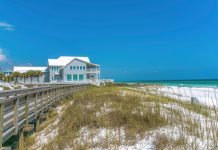
The islands and mainland nations of the Caribbean each have a unique story of gaining independence from colonial rule. While some waged relentless battles for freedom, as exemplified by the 13-year struggle of Haitian soldiers during the Haitian Revolution, many peacefully negotiated their liberation from British, Spanish, or French dominance through treaties, acts, coalitions or elections. Some even still retain colonial ties as territories or members of the Commonwealth, but the ones in our story proudly hoist their own national flags.
Here are ten English-speaking countries that achieved peaceful Caribbean independence and how they celebrate annually with festive traditions.
Jamaica (August 6, 1962): The Birth of Reggae Nation
As one of the largest former British colonies, Jamaica marked the end of a long history of colonial dominance in 1962 as the Union Jack was lowered and Jamaica’s new flag was raised. Each year the island celebrates its independence with parades, cultural festivals, music and, of course, great food.

While Independence Day is on August 6, the week leading up is packed with activities to celebrate from Emancipation Day (the day slavery was abolished across the British colonies) on the 1st. The most iconic celebration in the capital city is put on by the government and called “Festival,” composed of an annual flag raising ceremony, dance competitions in traditional bandana and madras for Mello-Go-Roun’, a song competition and a Festival Queen Competition. Attendees are encouraged to dress in black, green and gold, the colors of the flag.
A Grand Gala is also held during the week, with performers, folk costumes, parade floats and music.
Trinidad and Tobago (August 31, 1962): Steel Drums and Carnival
Following closely behind Jamaica, Trinidad and Tobago celebrated their first Independence Day with a week-long extravaganza from August 28 to September 05 in 1962. The momentous occasion, graced by international dignitaries, including the reading of Queen Elizabeth II’s message relinquishing governance by her younger sister Princess Maragret, marked the official transition from colonial rule.
Each year, independence festivities showcase Trinidad and Tobago’s rich culture, featuring steel drum bands, Carnival parades and spirited calypso music. The heart of the celebration unfolds at Queen’s Park Savannah, the oldest recreational area in the West Indies, where the largest parade, accompanied by lively calypso tunes and military marches, creates a carnival-like atmosphere embraced by proud Trinidadians. Traditional food is typically served all week long, including pelau, callaloo and curried crab.

Guyana (May 26, 1966): The Land of Many Waters
Guyana’s Independence Day pays tribute to its diverse ethnic backgrounds, including East Indian, African, Amerindian and European influences. Celebrations include cultural performances, traditional cuisine and more.
Cultural activities include mass displays of dances set to patriotic and national music, performed by the spirited youth of Guyana, religious groups, choirs and steel bands. Parades with large floats and people in traditional costume are also a common sight. Then, ceremonial activities encompass a joint military band exhibition, military parade, announcement of National Awards, speeches from important government and community members and other performances. A presidential address precedes the hoisting of the Golden Arrowhead, followed by a fireworks display orchestrated by the Guyana Defence Force.
Barbados (November 30, 1966): The Gem of the Caribbean
After 300 years of colonial rule, Barbados commemorated its independence with a grand ceremony that raised their triband flag, an inaugural rendition of the national anthem and a parade showcasing their military might in 1966. Celebrations since have been just as impressive, with the centerpiece being a grand parade at Garrison Savannah, featuring the participation of various entities like the Barbados Defence Force and Barbados Regiment. During this time the island is also illuminated with blue and yellow lights on Parliament, Independence Square and public buildings in Bridgetown, mirroring the national flag’s colors.

Spanning the entire month of November, independence festivities also include sports competitions, fairs, community events and religious services. The National Independence Festival of Creative Arts (NIFCA) stands out, showcasing the diverse artistic talents of Barbadians in music, singing, dance, drama, writing, fine art, photography and arts and crafts.
The Bahamas (July 10, 1973): Island Paradise
Independence Day in The Bahamas is a sun-soaked beach celebration. Bahamians proudly fly their national flag and tourists are welcomed to join in the festivities, creating a unique blend of cultures. Junkanoo parades, with colorful costumes and vibrant music, take over the streets, filling the island with the lively sounds of cowbells and goat-skinned drums.
Annual festivities include a dynamic street festival featuring live chef demonstrations, local artisans, diverse food offerings and performances by bands, dancers and artists, all showcasing the rich talent and entertainment of Bahamian culture. A nod to history has been made with a national float parade, reminiscent of the first Independence Day celebrations.
Grenada (February 7, 1974): Spice of the Caribbean
Grenada’s Independence Day is a celebration steeped in the island’s spice culture. The air is filled with the enticing scents of eats and treats made with nutmeg and cinnamon, spices that adorn the national flag, enhancing the atmosphere of parades and cultural events. Across various cities, colorful parades and official ceremonies mark the day, inviting people to dress up, gather with loved ones and reflect on the nation’s journey to sovereignty.
In the capital city of St. George’s, a parade fills up the streets with traditional music and dance, accompanied by cultural displays. Throughout Grenada, communities establish cultural villages showcasing the island’s rich heritage through traditional dance and crafts, while the day is also celebrated with delicious local cuisine and a breathtaking evening fireworks display.
Saint Lucia (February 22, 1979): Home of the Twin Pitons
The picturesque island of Saint Lucia’s independence day embraces its French and British heritage with a blend of culture and celebration. The day includes parades, cultural performances and a national flag-raising ceremony in the capital, Castries.
The official Raising of the Flag takes place on the night of February 21, leading up to a spectacular midnight fireworks display on February 22. In the community, Independence Day is marked by church services, rugby competitions, table tennis and netball matches with friends. There is also an annual Independence Baton Relay which stands as a symbolic representation of the nation’s collective journey towards progress, emphasizing unity and progress step by step.
Belize (September 21, 1981): The Heart of the Mayan World
Following diplomatic negotiations that ended Belize’s nearly 120 years of colonial rule, Independence Day now merges Mayan heritage with Caribbean spirit. Festivities include elements such as fireworks displays, local parades, ancient dances, cultural exhibitions and a grand flag-raising ceremony in the capital, Belmopan.

The celebration unfolds almost two weeks prior to September 21st, with J’ouvert and Carnival seamlessly integrating into the unofficial Independence festivities. Locals adorn costumes in Belizean colors — red, white, and blue — adding a spirited dimension to the commemoration.
Antigua and Barbuda (November 1, 1981): Sun, Sea and Independence
Now known for its stunning white sand beaches and lush rainforests, Antigua and Barbuda has well surpassed its original purpose to be a “slave breeding” colony. After nearly 350 years of British/English rule, the Antiguan Flag was raised in 1981. Now, the country celebrates its independence with sailing regattas and a grand parade in the capital, St. John. The nation’s motto “Each Endeavoring, All Achieving” reflects its commitment to unity and progress, symbolizing the spirit of two islands coming together in pursuit of self-determination.
Saint Kitts and Nevis (September 19, 1983): Twin Island Paradise
As the smallest nation in the Western Hemisphere, Saint Kitts and Nevis marks its independence with a grand cultural spectacle, marked by the lively beats of steel drums and folklore performances that entice both locals and visitors. The celebrations unfold with parades, cultural showcases, flag-raising ceremonies and speeches by government officials and dignitaries, accompanied by the singing of the national anthem.
These Caribbean nations’ independence days are more than just celebrations, they are powerful reminders of the enduring spirit, resilience and cultural richness that define these beautiful places. Whether it’s dancing in Trinidad and Tobago, enjoying the natural beauty of St. Lucia or embracing the diversity of Belize, these stories of independence are a testament to the beauty of cultural diversity and the drive of these nations as they celebrate the past and look forward to the future.































